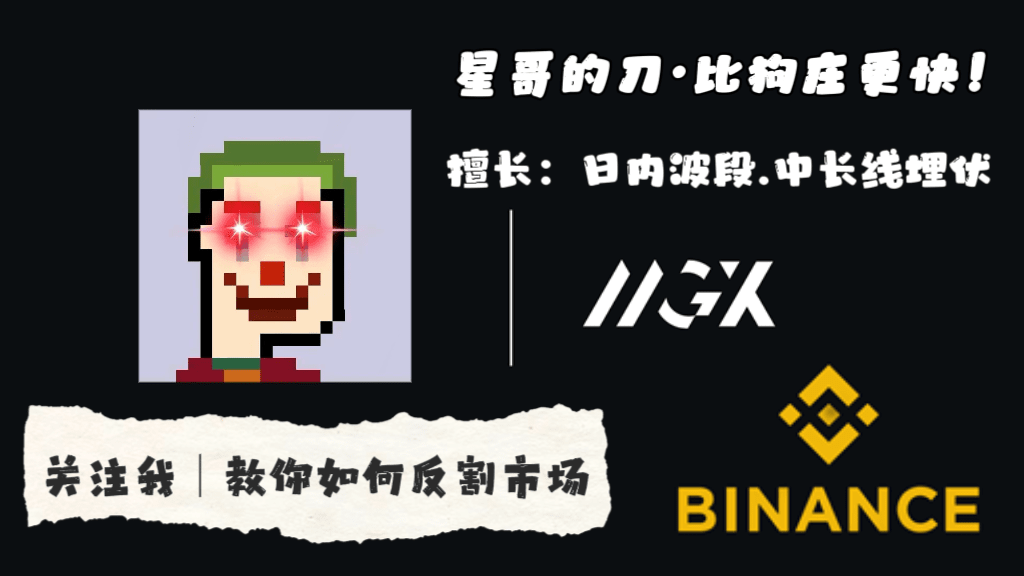Attention everyone! With a position value of 20,000, using 2,000 to open 10 times leverage and 4,000 to open 5 times leverage may seem to show the same numbers, but the liquidation prices are vastly different. However, true trading experts understand that fixating on the liquidation price is useless; stop-loss is the lifesaver!
There is a saying in the community: True cryptocurrency masters are practitioners of 'simplicity is the ultimate sophistication.' Repeating simple patterns can yield a short-term win rate of up to 98.8%; turning 100,000 into 10 million is not a myth— the key is to find the pattern that suits you.
I know an old brother from Fujian who is obsessed with day trading and studies various technical indicators all day long. In just a few years, he started with a small amount of capital and has now achieved financial freedom through trading cryptocurrency. After improving his techniques and practicing them myself, my capital of 250,000 directly grew to 30 million within a year! Today, I am sharing these invaluable tips, and those who read them seriously might save several years of detours.
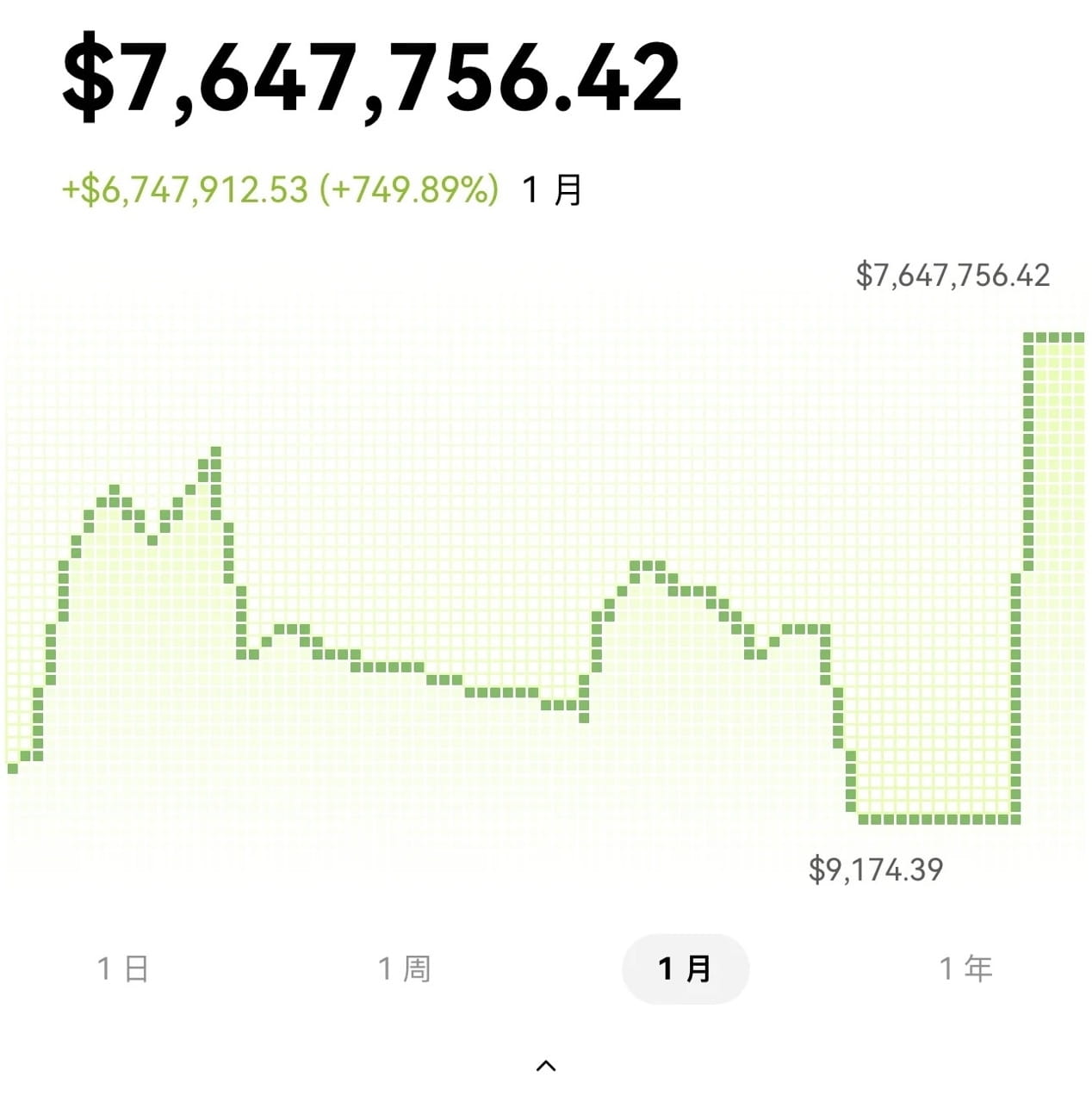
After struggling in the crypto space for 10 years and earning 60 million, I have one insight: If ordinary people want to change their fate, they must try the crypto space. If you can't seize opportunities in this wealth-generating arena, you might really have to accept your fate.
Surefire methods for playing with coins
Long-term winning method for mainstream coins: Invest heavily in mainstream value coins, only deal in spot and avoid contracts. Regardless of the price move, hold long-term based on entry prices, flexibly rolling positions (add positions when necessary, reduce positions when necessary). Don’t panic during a market crash; as long as the four-hour line has not broken below the 20-day line, stay steady—there are three key points hidden in this:
Contracts are a fierce tiger: Unless you have mastered it, don't take this porcelain job; contract data and spot trading are completely different; preserving capital is essential to wait for a bull market to enjoy the big gains!
Pullbacks are a form of energy accumulation: After a surge in mainstream coins, a gap up at the 5-day line resembles catching your breath after a sprint; pulling back to the 5-day line or even the 10-day line is all about accumulating strength to continue rising.
The big players are 'washing the vegetables': retail investors love to chase highs and sell lows; just after entering at a high price, the big players drop the price sharply to scare people, aiming to force you to cut losses and hand over your chips.
Swing profit-taking techniques: Reduce position size on profitable trades in advance, or sell in batches at high points, firmly locking profits in your pocket.
Low-level order catching secret: Place buy orders in advance at the 5-day, 10-day, and 30-day lines on the daily chart and wait for the price to drop automatically.
Lifeline stop-loss method: Use the lifeline to judge trends; once the trend changes and effectively breaks below the lifeline, quickly reduce your position upon a pullback.
Mindset for price fluctuations: During a price surge, be clear about the risks and don’t blindly chase highs; during a price drop, see the opportunity and gradually pick up cheap chips at lower levels.
Position protection technique: Reduce position size on profitable trades, don’t ride the roller coaster for empty joy; stop-loss must be set for bottom-fishing trades; capital safety is always the priority.
Fuzzy market strategy: When the direction is unclear, it's better to miss out than to force a trade. Preserve your capital to laugh last in the market.
Without further ado, let’s get straight to the hard facts! The trading strategy shared today can be regarded as the secret to 'standing on the shoulders of giants and saving ten years of struggle.' Friends who happen to see this, if you want to improve your trading skills, study it seriously— the highest realm of trading is to view the market with a developmental perspective, achieving a state of 'Wu Ji.'
In plain language: Whenever you have free time to check the market, you can catch a small swing to earn some pocket money.
The day trading strategies shared earlier have both insights and tactics, and many short-term enthusiasts have called it thrilling. However, some friends have complained: Day trading requires constant monitoring of charts, which is too tiring and taxing. They want something that allows for long-term holding without having to stare at the market all day; wanting to make big profits while not wanting to lose much—does such a good thing really exist?
The answer must be affirmative! It is swing trading, a low-pressure, stable-return trading method, especially suitable for part-time traders.
However, before discussing swing trading, it must be emphasized: No one in the trading market can take responsibility for you, and if you lose, don’t blame fate. There is no best trading style, only the one that suits you best. Just like the Forex swing expert we will discuss today, who tried various strategies for over ten years and faced liquidation to the point of questioning life until discovering that the daily chart was his wealth code.
Therefore, to achieve stable profitability in trading, the first step is to find a style that suits you and then stick to the strategy—don’t always think about imitating others.
The duel between short-term and swing trading
To find a style that suits you, you must first understand the strengths and weaknesses of each major faction. Below, I will break down the advantages and disadvantages of short-term and swing trading:
Short-term trading: Dancing on the edge of a knife
Advantages: There are numerous opportunities for short-term fluctuations, with entry signals available in 1-minute, 5-minute, and 15-minute intervals. Day trading has clear objectives, like completing tasks in a game; the risks can also be locked down, with forced stop-loss based on capital and levels, making position sizing very clear.
Disadvantages: Frequent trading is like crossing the road frequently, with a high chance of accidents; staring at the market all day can make a person exhausted, causing both physical and mental strain.
Swing trading: Earning money by waiting patiently
Advantages: Only take action on high-probability profitable opportunities, much easier than day trading, without staring at the screen all day; trading costs are also lower, and the money saved allows for a few more cups of milk tea.
Disadvantages: Longer holding periods come with overnight risks, just like worrying about heavy rain at night when planting crops; it also tests patience and principles; those who can’t endure it can’t do it at all.
In simple terms: Day trading is like guerrilla warfare, making quick money but exhausting; swing trading is like holding the fort, free, relaxed, and steady. Regardless of the method, whether one can make money depends on personality, skills, and understanding—choosing the right path is 100 times more important than hard work.
Now, let's reveal the unique secrets of swing trading experts and see how miraculous their six-step profit method is.
02 What is swing trading?
I introduced day trading in last week's article, so I won’t repeat it today. For those who haven't seen it, you can check the past valuable content you might have missed at the end of the article. Today, we will mainly understand swing trading.
Swing trading (Swing Trading) is a strategy that attempts to capture a significant wave of upward or downward movement, with holding periods ranging from a few days to a few weeks.
Swing traders, while looking for trading opportunities using technical analysis, also utilize fundamental analysis to analyze price trends and patterns.
Swing trading mainly consists of two parts—swings and volatility points. As shown in the chart below:
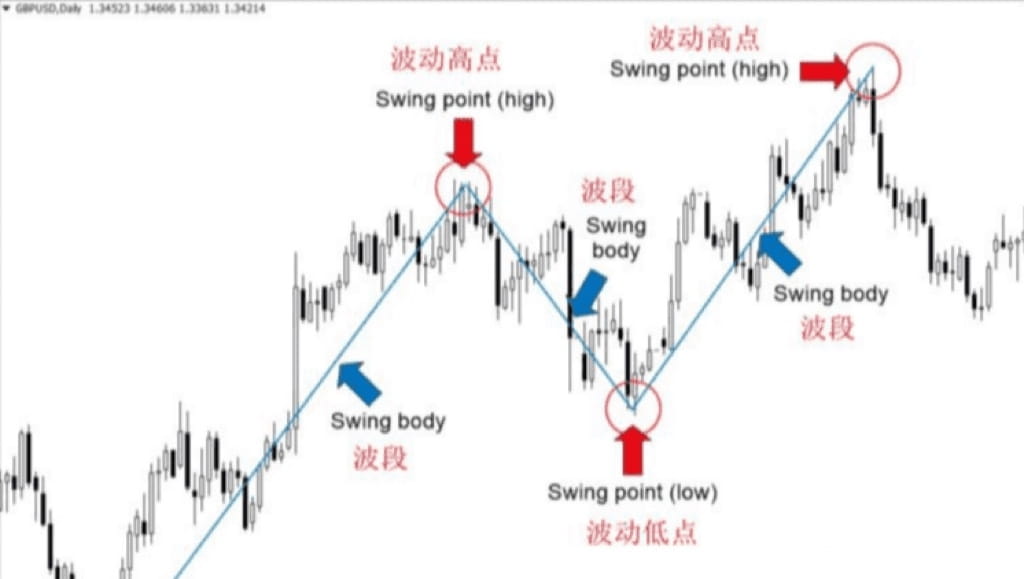
03 How to conduct swing trading?
Below, I will introduce the six steps of swing trading.
1. Focus on the daily chart
Observe the daily chart more, as it provides the most comprehensive price trends and more reliable price signals.
However, note that not all daily charts are worth paying attention to.
I mainly use the daily chart of the New York closing price. Because every 24-hour trading session closes at 5 PM Eastern Standard Time, this is also referred to as the 'market closing time' in the forex market.
Therefore, I recommend that swing traders use the daily chart. If you have been profitable using the daily chart, you can try starting with the 4-hour chart.
In general, a higher time frame usually indicates more reliable price action signals.
2. Draw key support and resistance levels
Draw key support and resistance levels; this is the most important part of the entire process. For swing traders, if you haven't identified key support and resistance levels, it is impossible to make a profit.
Next, I will introduce two important types of level lines:
1. Support and Resistance Lines
Support and resistance are points on the chart that withstand continuous upward or downward pressure. Support levels are typically the lowest points in all chart patterns, while resistance is the highest point (peak) on the chart.
Additionally, support and resistance levels are not usually 'exact' levels; it is best to view them as areas.
2. Trend Lines
Although trend lines are one of the most common methods in technical analysis, not all traders use trend lines, possibly because most traders cannot draw accurate trend lines.
Generally speaking, an upward trend line connects the lows of each swing, while a downward trend line connects the highs of each swing.
3. Identify oscillations
If you have learned to mark support and resistance zones on the daily chart, the next step is to use swing highs and swing lows to determine oscillations.
There are mainly three types of oscillations: upward trend, downward trend, and range trend.
1. Upward Trend
Higher highs and higher lows; the following chart shows a typical upward trend:

In the above chart, each peak of volatility is higher than the last; you can buy in this bullish trend.
2. Downward Trend
Lower highs and lower lows; the following chart shows a typical downward trend:
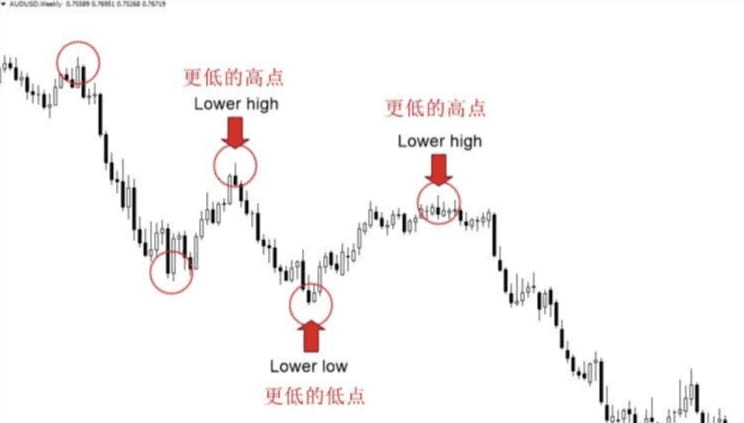
In the above chart, each peak of volatility is lower than the last; this is when you can sell.
3. Range Trend
Horizontal movement, also known as consolidation, as shown in the chart below:
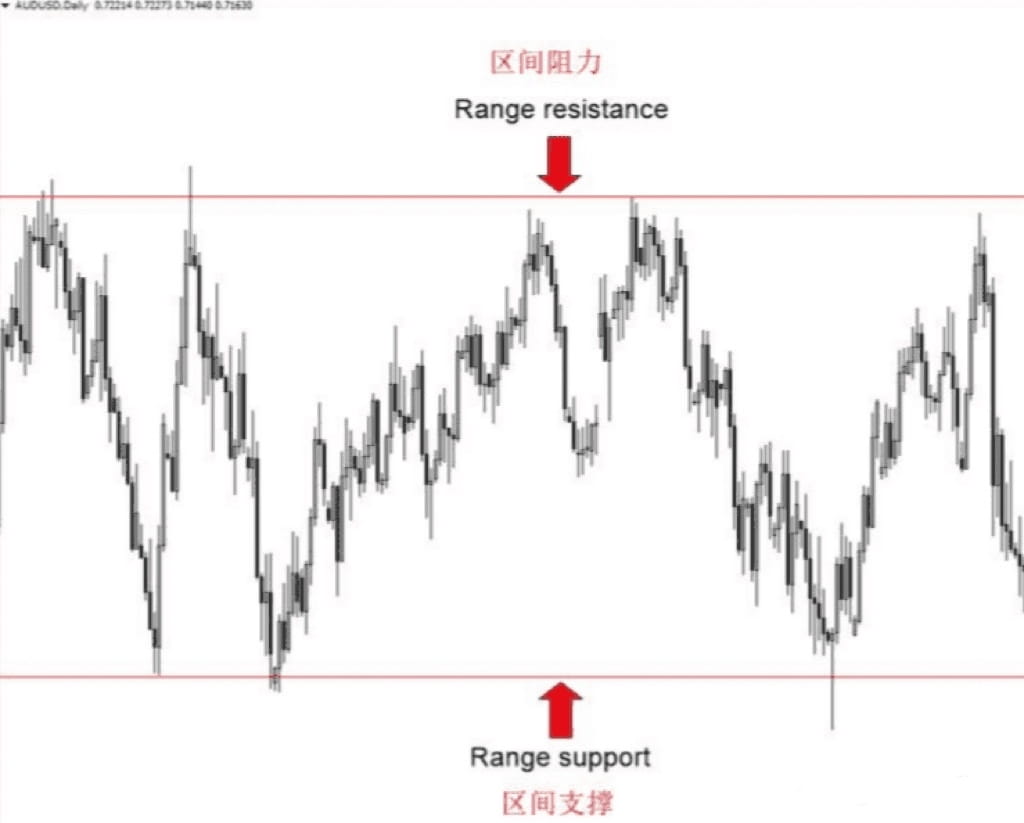
Range trends are the most common type of trend. Although the chart above does not show a bullish or bearish trend, swing traders can still profit within this range, possibly even easier than in the other two oscillation trends.
What should be done?
Use support and resistance levels. As shown in the chart below, note the two pin bars in the chart:
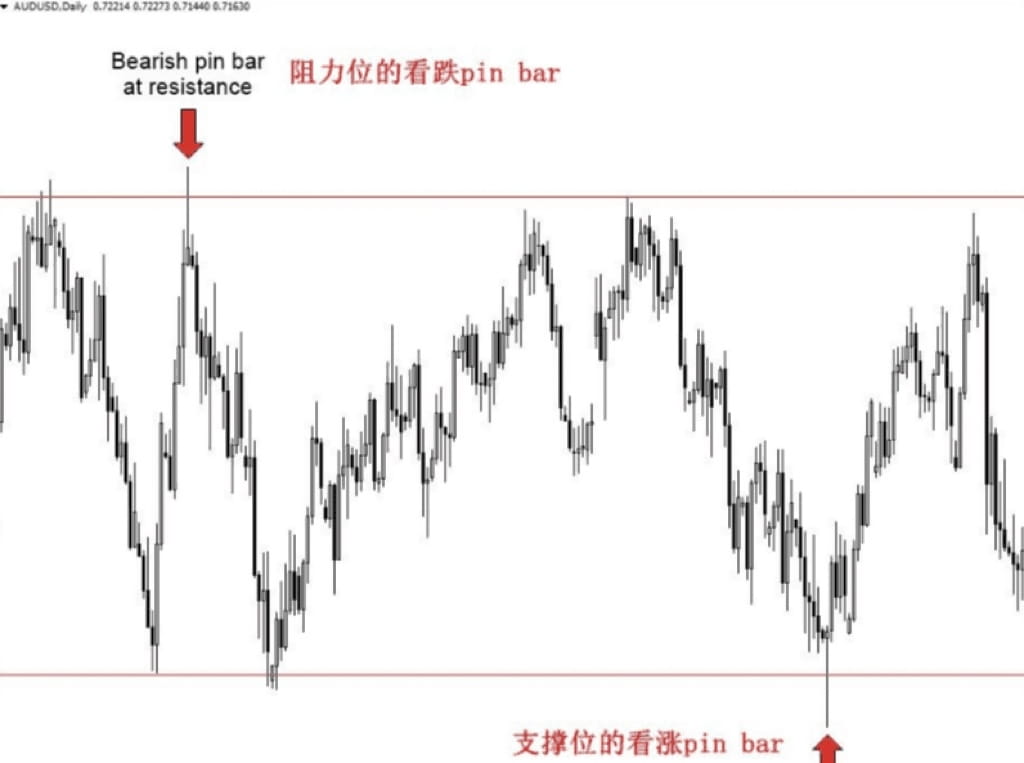
4. Look for price action signals
Through the above three steps, you have identified the current oscillation on the daily chart.
1. If the market is in an upward trend, you should start paying attention to buy signals at key support levels, as shown in the chart below, where a bullish pin bar has appeared at the key support level.
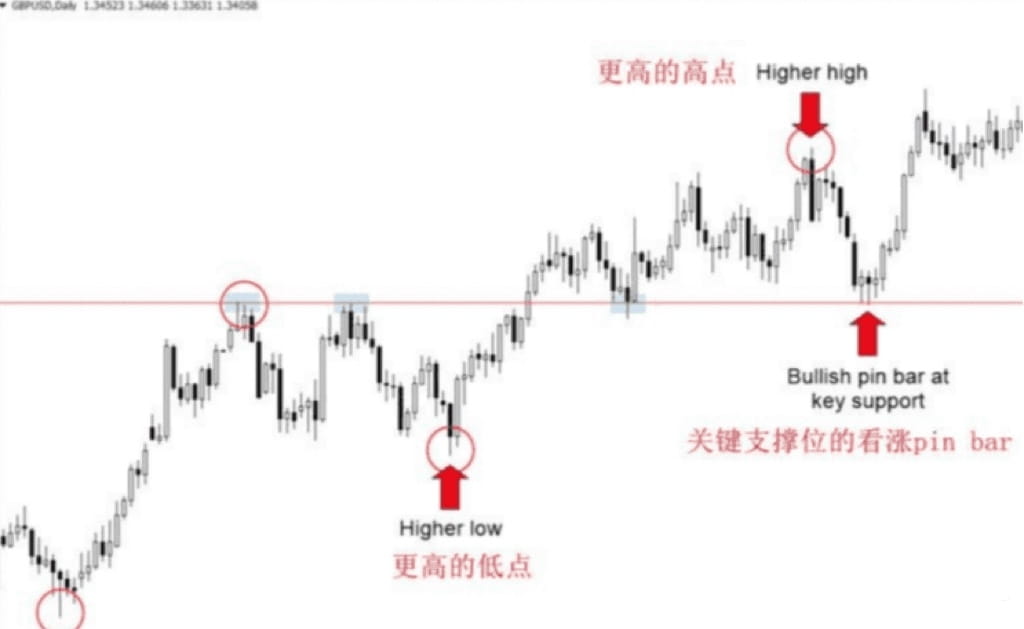
The bullish pin bar in the chart above is a buy signal, indicating that we can profit in the ongoing upward market trend.
2. If the market is in a downward trend, then you should focus on sell signals at resistance levels, as shown in the chart below:
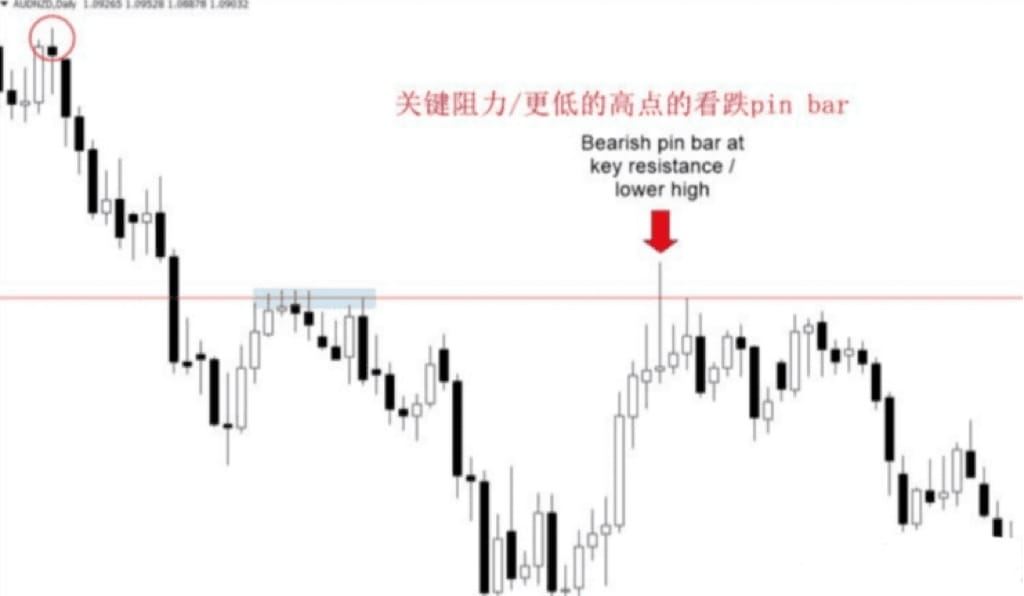
We can use the bearish pin bar in the chart as a sell signal.
In fact, for swing traders, capturing the entire swing is very difficult; what we can do is to pay as much attention as possible to swing changes and patiently wait until confirming the price trend before entering the trade.
5. Determine exit points
Determining exit points has an important prerequisite: determine take profit and stop-loss before entering. This is because once you enter, your emotions will be influenced by market changes.
So, how do you determine exit points?
It's simple, still rely on support and resistance levels, as shown in the chart below:
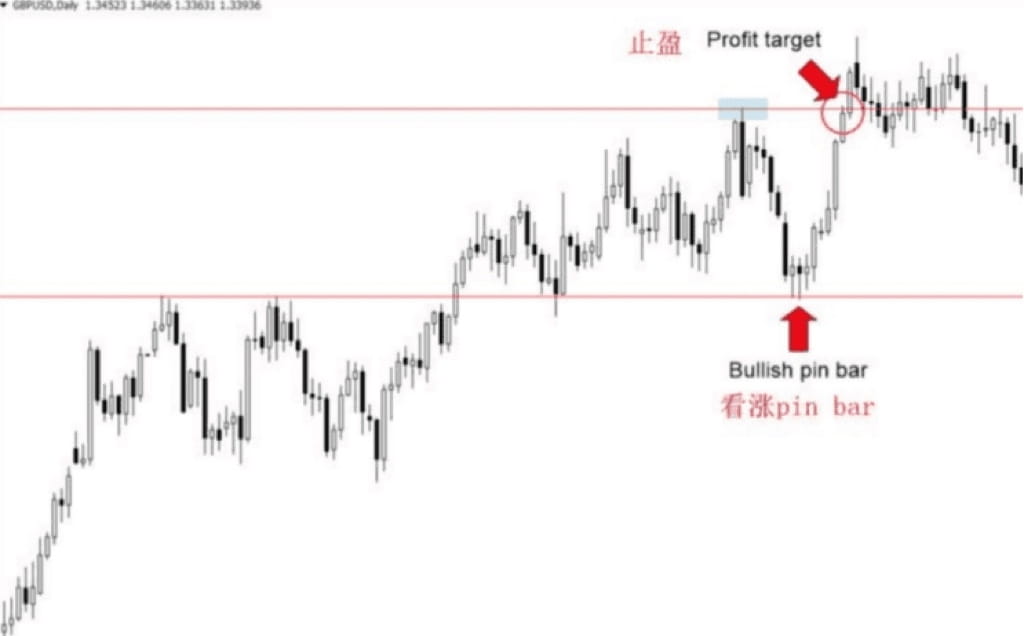
The above chart is a daily chart of GBPUSD: it is clearly an upward trend, and the price has exceeded our set profit target.
When this happens, there’s no need to feel frustrated; we have captured most of the upward trend. Remember, in trading, don’t be too greedy.
Let’s take another look at the daily chart of AUDNZD: we can also determine take profit points based on support and resistance levels, which are the exit points. As shown in the chart below:
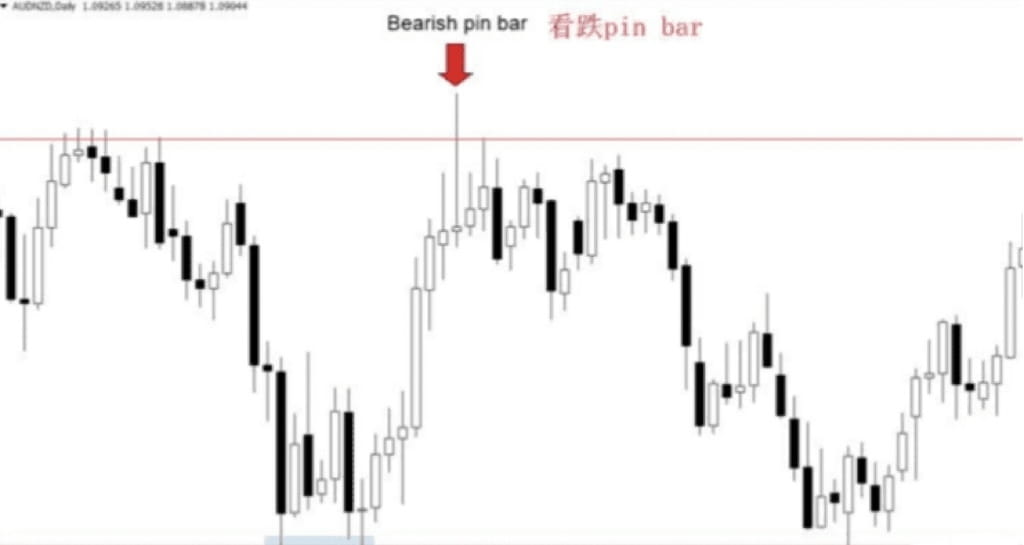
In summary, support and resistance zones and trend lines are the foundation of all trading setups. Once these are established, entry and exit points will be clear at a glance.
6. Calculate and manage risks
Currently, risk is usually calculated using the R-multiple, for example, a stop-loss of 100 points and a take profit of 300 points is set to be 3R. If your capital is 100 dollars and you earn 500 dollars, then the risk-reward ratio is 5R.
Risk management essentially involves stop-loss and take profit:
Stop-loss: The best stop-loss position is at the top or bottom of the pin bar.
If a bullish or bearish engulfing pattern occurs, the stop-loss should be set 10 to 20 points above or below the candlestick.
Take profit: Take profit is still related to key support and resistance levels. For swing traders, the key to profit is capturing the fluctuations between support and resistance levels.
If an upward trend occurs in the market, and a bullish pin bar forms at the support level, then set the take profit at the next key resistance level.
Opportunities are hidden in volatility; what you lack is not information, but the courage to make a decisive choice! Follow Xing Ge and let professionalism guide your decisions.
